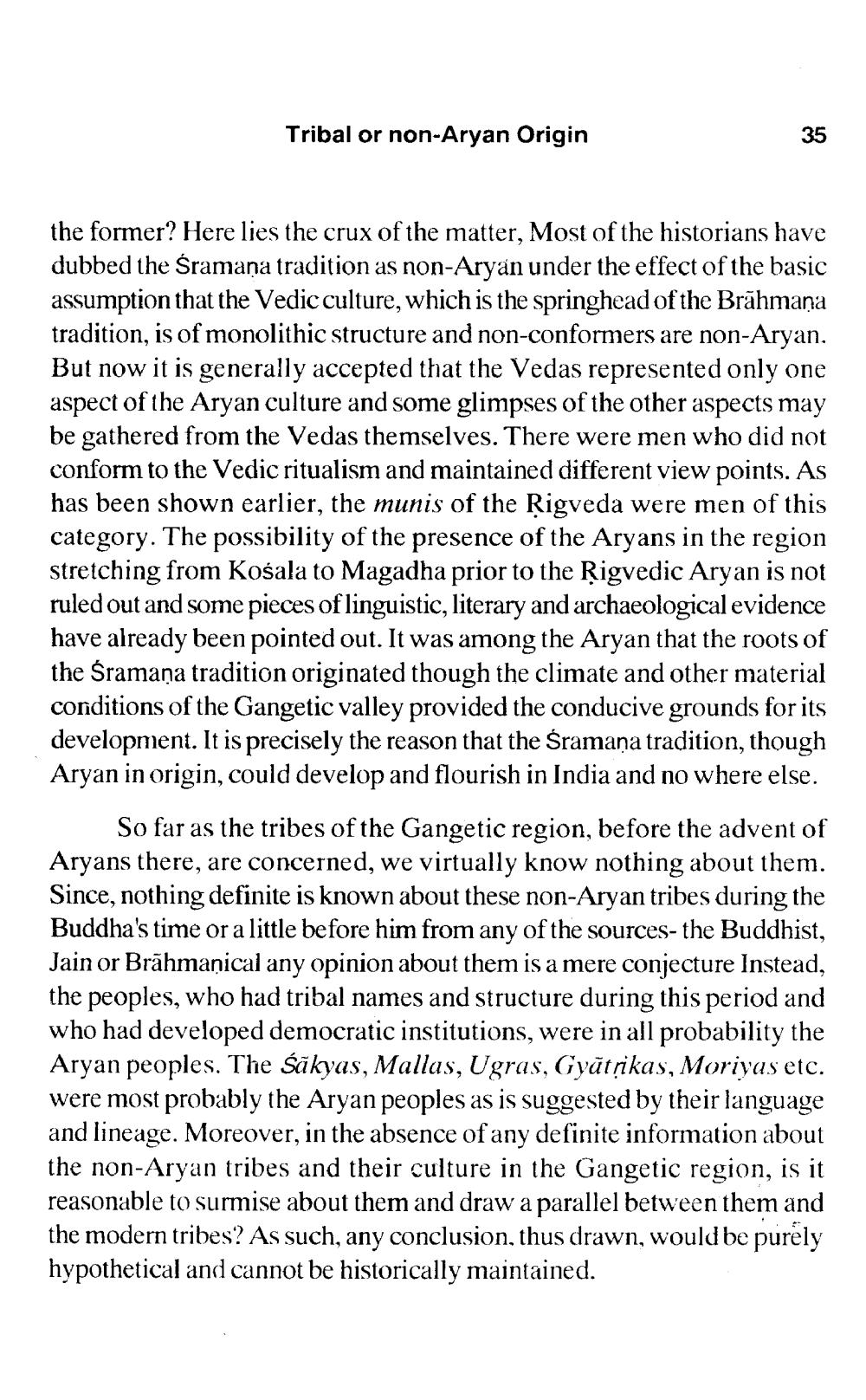________________
Tribal or non-Aryan Origin
35
the former? Here lies the crux of the matter, Most of the historians have dubbed the Śramana tradition as non-Aryan under the effect of the basic assumption that the Vedic culture, which is the springhead of the Brāhmaṇa tradition, is of monolithic structure and non-conformers are non-Aryan. But now it is generally accepted that the Vedas represented only one aspect of the Aryan culture and some glimpses of the other aspects may be gathered from the Vedas themselves. There were men who did not conform to the Vedic ritualism and maintained different view points. As has been shown earlier, the munis of the Rigveda were men of this category. The possibility of the presence of the Aryans in the region stretching from Košala to Magadha prior to the Rigvedic Aryan is not ruled out and some pieces of linguistic, literary and archaeological evidence have already been pointed out. It was among the Aryan that the roots of the Gramaņa tradition originated though the climate and other material conditions of the Gangetic valley provided the conducive grounds for its development. It is precisely the reason that the śramaņa tradition, though Aryan in origin, could develop and flourish in India and no where else.
So far as the tribes of the Gangetic region, before the advent of Aryans there, are concerned, we virtually know nothing about them. Since, nothing definite is known about these non-Aryan tribes during the Buddha's time or a little before him from any of the sources- the Buddhist, Jain or Brāhmaṇical any opinion about them is a mere conjecture Instead, the peoples, who had tribal names and structure during this period and who had developed democratic institutions, were in all probability the Aryan peoples. The Śākyas, Mallas, Ugras, Gyātrikas, Moriyas etc. were most probably the Aryan peoples as is suggested by their language and lineage. Moreover, in the absence of any definite information about the non-Aryan tribes and their culture in the Gangetic region, is it reasonable to surmise about them and draw a parallel between them and the modern tribes? As such, any conclusion, thus drawn, would be purely hypothetical and cannot be historically maintained.




